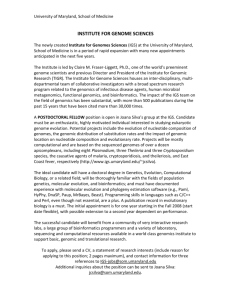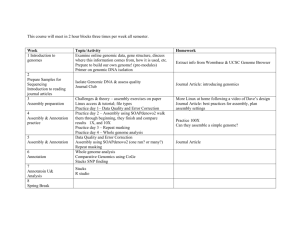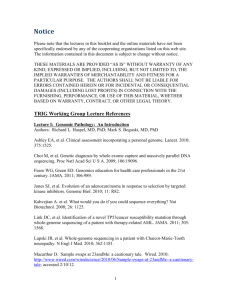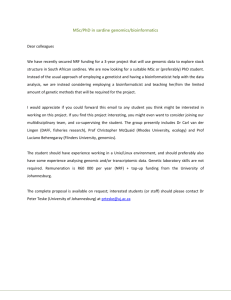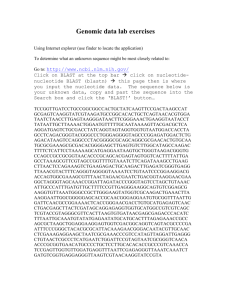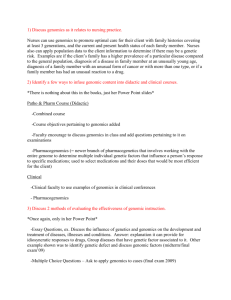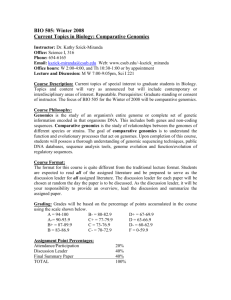Genome Sequencing and Biology - NCMI
advertisement
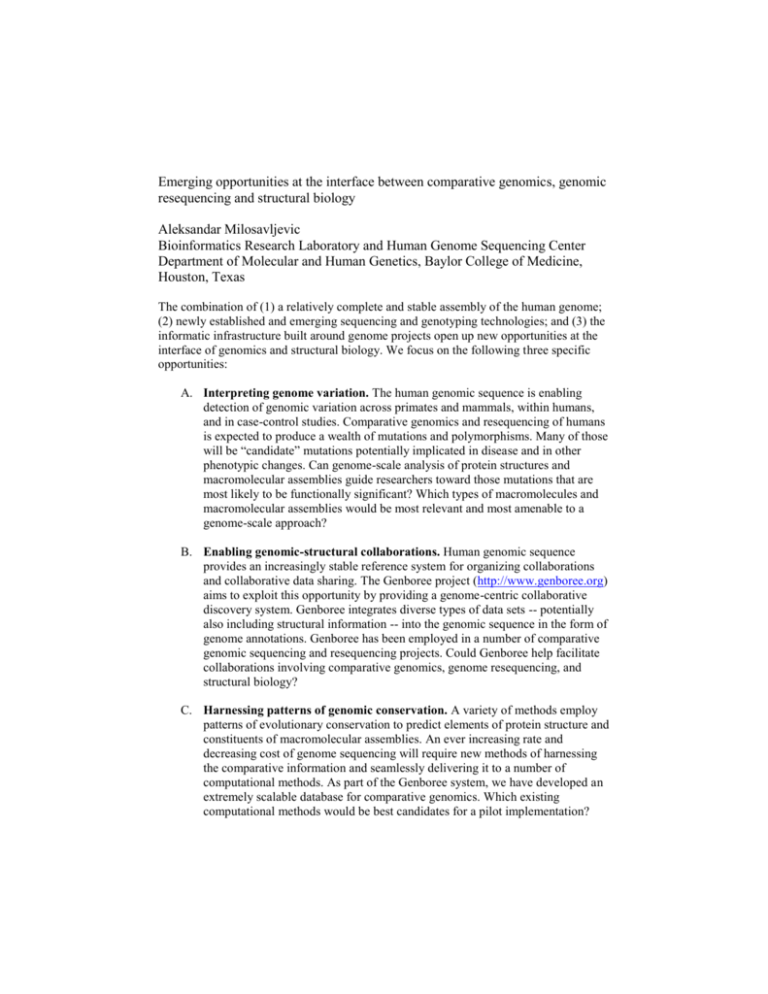
Emerging opportunities at the interface between comparative genomics, genomic resequencing and structural biology Aleksandar Milosavljevic Bioinformatics Research Laboratory and Human Genome Sequencing Center Department of Molecular and Human Genetics, Baylor College of Medicine, Houston, Texas The combination of (1) a relatively complete and stable assembly of the human genome; (2) newly established and emerging sequencing and genotyping technologies; and (3) the informatic infrastructure built around genome projects open up new opportunities at the interface of genomics and structural biology. We focus on the following three specific opportunities: A. Interpreting genome variation. The human genomic sequence is enabling detection of genomic variation across primates and mammals, within humans, and in case-control studies. Comparative genomics and resequencing of humans is expected to produce a wealth of mutations and polymorphisms. Many of those will be “candidate” mutations potentially implicated in disease and in other phenotypic changes. Can genome-scale analysis of protein structures and macromolecular assemblies guide researchers toward those mutations that are most likely to be functionally significant? Which types of macromolecules and macromolecular assemblies would be most relevant and most amenable to a genome-scale approach? B. Enabling genomic-structural collaborations. Human genomic sequence provides an increasingly stable reference system for organizing collaborations and collaborative data sharing. The Genboree project (http://www.genboree.org) aims to exploit this opportunity by providing a genome-centric collaborative discovery system. Genboree integrates diverse types of data sets -- potentially also including structural information -- into the genomic sequence in the form of genome annotations. Genboree has been employed in a number of comparative genomic sequencing and resequencing projects. Could Genboree help facilitate collaborations involving comparative genomics, genome resequencing, and structural biology? C. Harnessing patterns of genomic conservation. A variety of methods employ patterns of evolutionary conservation to predict elements of protein structure and constituents of macromolecular assemblies. An ever increasing rate and decreasing cost of genome sequencing will require new methods of harnessing the comparative information and seamlessly delivering it to a number of computational methods. As part of the Genboree system, we have developed an extremely scalable database for comparative genomics. Which existing computational methods would be best candidates for a pilot implementation? What are the most promising directions for the development of new algorithms that harness comparative genomic information for structural predictions? To help answer the questions above, relevant current progress and trends in comparative genomics and genome resequencing will be reviewed. Possible collaborative scenarios will also be outlined.

